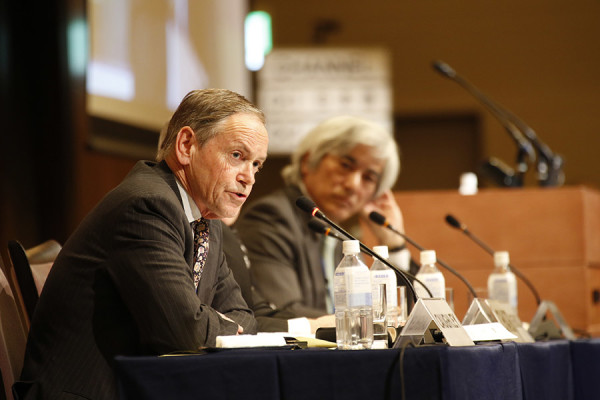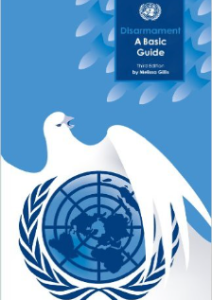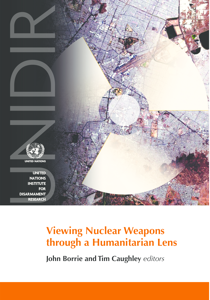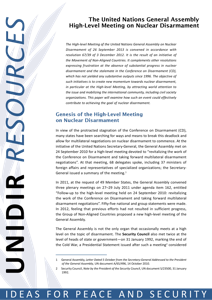Weapons of Mass Destruction
In 1977, the General Assembly, through its resolution A/RES/32/84-B, affirmed the definition of Weapons of Mass Destruction as “[…] atomic explosive weapons, radioactive material weapons, lethal chemical and biological weapons, and any weapons developed in the future which might have characteristics comparable in destructive effect to those of the atomic bomb or other weapons mentioned above.”
Weapons of mass destruction (WMDs) constitute a class of weaponry with the potential to:
- Produce in a single moment an enormous destructive effect capable to kill millions of civilians, jeopardize the natural environment, and fundamentally alter the lives of future generations through their catastrophic effects;
- Cause death or serious injury of people through toxic or poisonous chemicals;
- Disseminate disease-causing organisms or toxins to harm or kill humans, animals or plants;
- Deliver nuclear explosive devices, chemical, biological or toxin agents to use them for hostile purposes or in armed conflict.
A number of multilateral treaties exist to outlaw several classes of WMDs. These treaties include the Biological Weapons Convention (BWC) and the Chemical Weapons Convention (CWC). Multilateral treaties targeting the proliferation, testing and achieving progress on the disarmament of nuclear weapons include the Treaty on the Non-Proliferation of Nuclear Weapons (NPT), the Treaty on the Prohibition of Nuclear Weapons (TPNW), the Treaty Banning Nuclear Weapon Tests In The Atmosphere, In Outer Space And Under Water, also known as the Partial Test Ban Treaty (PTBT), and the Comprehensive Nuclear-Test-Ban Treaty, which was signed in 1996 but has yet to enter into force. Several treaties also exist to prevent the proliferation of missiles and related technologies, which can be used as a vehicle to deliver WMD payloads. These treaties dosage for clenbuterol liquid include the Hague Code of Conduct (HCOC) and the Missile Technology Control Regime (MTCR).
Weapons of Mass Destruction and Asia and the Pacific
States in Asia and the Pacific have experienced first-hand the inhumane effects of WMDs, and the region has assumed a leadership role in the global campaign to delegitimize all forms of WMDs. Three of the six treaties establishing nuclear-weapon-free zones are located in Asia and the Pacific, those being the Treaty of Rarotonga (South Pacific Nuclear Free Zone Treaty, 1986), the Bangkok Treaty (Southeast Asian Nuclear-Weapon-Free Zone Treaty, 1995), and the Central Asia Nuclear-Weapon-Free-Zone (2006). In addition, Mongolia declared itself the first single-State nuclear-weapon-free zone (SS-NWFZ) in 1992, and has set a precedent for other states to follow in declaring themselves SS-NWFZs. In May 2012, Ambassador J. Enkhsaikhan of Mongolia proposed two draft declarations to the five recognized nuclear states (P5) in an effort to attain security assurances that would allow them to officially recognize Mongolia’s status as a non-nuclear state. In September 2012 the five nuclear-weapon states signed a joint declaration that not only recognized Mongolia’s nuclear-weapon-free status, but also committed them to respect that status and not contribute to any act that would violate it.
So long as any state has nuclear weapons, others will want them. So long as any such weapons remain, it defies credibility that they will not one day be used, by accident, miscalculation or design… It is sheer luck that the world has escaped such catastrophe until now.— Canberra Commission, 1996

The majority of states in Asia and the Pacific have long realized that disarmament and non-proliferation remain indispensable to helping create an environment favourable to peace, security and development. However, the world remains awash with weapons of mass destruction. It is estimated that at the beginning of 2011, nuclear-weapon states possessed more than 20,500 nuclear warheads, more than 5000 of which are deployed and ready for use (SIPRI). Asian and Pacific states have taken seriously the challenge of overcoming obstacles to achieving a world free of weapons of mass destruction. UNRCPD will continue to assist states in Asia and the Pacific to, at their request, fulfil their peace, security and disarmament goals as they relate to WMDs.




